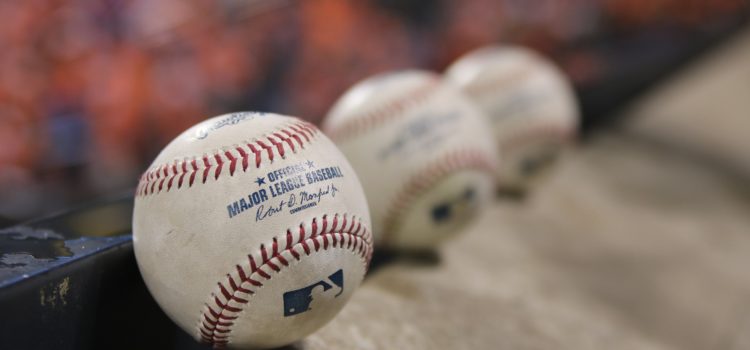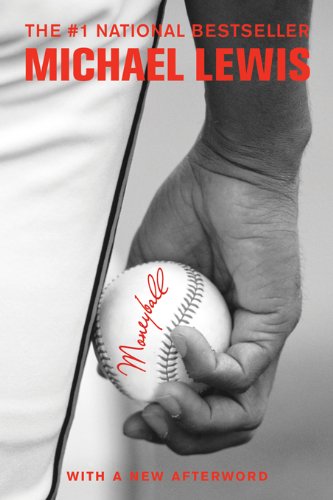

This article is an excerpt from the Shortform summary of "Moneyball" by Michael Lewis. Shortform has the world's best summaries of books you should be reading.
Like this article? Sign up for a free trial here .
Is Moneyball true? In other words, is Moneyball based on a true story?
When you ask, “Is Moneyball true?” the answer is yes. All the people in the book are real people in the baseball world. Moneyball is a true story about how the Oakland A’s GM, Billy Beane, used data-driven tactics to form and operate the baseball team. But it’s important to not only ask “Is Moneyball true?” but to know why it works. Keep reading to find out.
Is Moneyball True?
Is Moneyball true? Or is Moneyball based on a true story? Anyone involved in playing professional baseball or managing a professional team cannot escape the weight of the sport’s history. As America’s national pastime, it’s been played in the United States since before the Civil War. And this long and storied tradition has created a century and a half’s worth of conventional wisdom about best practices and how the game ought to be played.
Baseball’s old guard—a consortium of coaches, scouts, general managers, owners, former players, and sports journalists—have rigid conceptions of what makes a good player and how teams win games. But the central insight of Moneyball is that much of this conventional wisdom, propagated by baseball’s traditional gatekeepers, is hopelessly wrong. When you think about the question “Is Moneyball true?” you should also consider why it was so important for the story to be told.
The 2002 Oakland Athletics, pegged by baseball insiders as a mediocre club at the outset of the season, exposed much of the sport’s conventional wisdom to be bunk when they posted a 102-60 regular season. They did this with a roster composed of players that had largely been overlooked by the insider’s club—pitchers with unusual pitching technique, fielders who were overweight or couldn’t run quickly, and hitters who barely knew how to belt a home run. In short, the 2002 Oakland A’s were a team of players who didn’t look like players at all.
Moneyball is the story of how this team and its general manager, Billy Beane, turn the baseball world on its head and call into question everything that everyone thinks they know about the game. But to understand how Billy Beane proves the naysayers wrong, we need to take a closer look at the man himself and understand why his own baseball background and experiences influence the way he assesses baseball players.
(Shortform note: Moneyball has been a controversial book within the baseball world since its original publication in 2003. Some critics claim that it underestimates the achievements of traditional, non-sabermetric scouting: Barry Zito, Tim Hudson, and Mark Mulder for example, were great players for Oakland during the 2002 season, but are barely mentioned in the book. None of them were regarded as unconventional draft picks or diamonds in the rough—they were, instead, quite conventional baseball stars. This criticism accuses author Michael Lewis of picking and choosing his examples to make the sabermetric approach look prescient and the traditional, more subjective approach look ignorant and short-sighted.
Perhaps more significantly, the issue of performance-enhancing substances is entirely unmentioned. While baseball’s steroid scandal had not yet become a major story in 2003, it is now known that Jason Giambi and Miguel Tejada, two critical A’s players during the Moneyball era, were using PEDs. Given that Billy Beane was an acknowledged micromanager, overseeing all aspects of team operation and policy, this does raise important questions about what he did and didn’t know at the time.)
Billy Beane
To answer “Is Moneyball a true story?” let’s start from the beginning, back in 1980. Billy Beane is an extraordinarily talented high school baseball player—immensely talented and fiercely competitive, he is an all-around natural athlete. His rapid ascent to the major leagues seems all but assured.
But Billy also has dreams of going to Stanford University (where he had been admitted) and getting a world-class education, dreams that will be closed to him if he decides to go to the majors. He is, in fact, highly ambivalent about embarking on a career as a professional baseball player.
Nevertheless, he is drafted in the first round by the New York Mets in 1980 as one of their top prospects, signing with the club for a $125,000 bonus before being assigned to one of their minor league affiliates. He sacrifices his dream of studying at Stanford, which promptly rescinds his offer of admission once he decides to go pro instead of playing for the university’s baseball program.
Once he becomes a professional player (albeit in the minor leagues), he begins to crack under the enormous expectations that have been placed upon him and is emotionally unable to cope with failure on the field. Although endowed with natural athletic ability and a keen understanding of baseball, he is unwilling to be patient with the game and is paralyzed by his fear of failure: a failure which he had been told throughout his young career he would never experience due to his talent.
Billy has a middling MLB career throughout the 1980s, in the course of which he is traded from the Mets to the Minnesota Twins to the Detroit Tigers, and finally, to the Oakland A’s. In 1990, he accepts his status as a draft bust, retiring as a player that spring. After walking off the field, he takes a job with the team’s front office, in the lowly position of an advance scout, a shocking move for a former blue-chip baseball prospect.
As a scout, and eventually as GM, Billy will butt heads with the men who make up the scouting department. Scouting is the stronghold of baseball conventional wisdom, of men who believe that they can predict a player’s future success in the majors simply by observing with their own eyes how well they can hit a ball, throw a pitch, or steal a base, even if they only see that player play a handful of times. To Billy, these are the same men whose preference for subjective wishful thinking over objective analysis had raised his expectations, waved away his obvious psychological flaws, and set him on a path to failure.
As a scout, Billy is determined to never repeat their mistakes. He learns from both their failure and his own. He looks for players whose statistical performances indicate a likelihood of success in the major leagues. He is determined to never draft the next Billy Beane. This history is important to understanding Moneyball, and answering the question “Is Moneyball true?”
Building the Team
As a cash-strapped club, the Oakland A’s adopt a practice of developing players on their own through the draft and then trading them a few years later when they become free agents, after which such players will be too expensive to retain. After the 2001 season, they lose some major stars—through trades and free agency—whose contracts they are no longer able to afford. This is another important factor in understanding the question “Is Moneyball a true story?” since it makes Billy’s motivations clear.
Despite the team’s lack of financial resources, the A’s are remarkably successful on the field under Billy’s leadership. The 2001 A’s finish 102-60. The 2002 iteration of the team goes on to a 103-59 record, good for first place in the American League West Division and second overall in the league, despite having what appears to be an inferior roster.
They achieve this through shrewd, value-driven management of their most important asset: the players. No one on the team is treated as irreplaceable. DePodesta is able to quantify the net runs each player contributes to the team (by adding runs through offense and preventing them through defense). Every action taken by a player has an expected run value.
The Results
After Billy’s wheeling and dealing at the trade deadline, the A’s are reborn, going on to qualify for the playoffs and win the AL West Division with a 2002 regular season record of 103-59—just behind the Yankees for the best record in all of Major League Baseball. Their hot streak after the deadline includes what was then an American League-record 20-game winning streak. Their strategy of investing in unglamorous on-base percentage heroes rather than flashy home run hitters yields great results on the field.
The team’s success is a testament to their value investment strategy in building the team and a stunning rebuke to decades of conventional wisdom about what makes a winning ballclub. Still, many baseball traditionalists, particularly former player-turned-TV-commentator Joe Morgan, appear to be actively rooting against the A’s in the playoffs. They seem to not so much disagree with Billy’s ideas about how to win baseball games as to be outright offended by them. Winning games without flashy home run sluggers or lighting-speed pitchers, to these keepers of baseball’s conventional wisdom, is a violation of the natural order of things, a perversion of the noble tradition and spirit of America’s national pastime. Morgan is part of an insider’s club of pundits, writers, scouts, and ex-players, which never seems to face accountability for its failures. They are a social club that values loyalty over competence.
Unfortunately, the A’s fall in the first round of the playoffs, losing three games to two in a best-of-five divisional series to the Minnesota Twins. Although the naysayers hold this up as proof that sabermetrics and on-base percentage are not what makes a successful baseball team, DePodesta attributes the playoff failure to the small sample sizes of the playoffs, in which random on-field events have an outsized impact on the outcome of a series. He notes that during the regular season, the A’s allowed an average of only 4 runs per game, but that they allowed 5.4 during the series against the Twins, largely due to two bad games by pitcher Tim Hudson.
After the season, the Boston Red Sox offer Billy a five-year, $12.5 million contract to take the GM job in Boston, but Billy declines. This is one part of the story where people often ask, “Is Moneyball based on a true story?” But Billy’s Red Sox offer, and his decline, really happened. Out of high school, he had made the decision to sign an entry-level contract with the Mets. It was the only decision he had ever made for money—and it had been the worst decision of his life. He vows that he will never do that again.
Billy has finally fulfilled his destiny as a winner, but in the front office rather than on the field. In his 20+ year journey through the world of professional baseball, Billy has finally proved his value—and there is no putting a price on that. Is Moneyball a true story? Yes. It’s also an inspiring one.
Now you know the answer to the question “Is Moneyball true?” Not only is Moneyball true, but the people and the strategies they developed had permanent effects on baseball.

———End of Preview———
Like what you just read? Read the rest of the world's best summary of Michael Lewis's "Moneyball" at Shortform .
Here's what you'll find in our full Moneyball summary :
- How Billy Beane first flamed out as a baseball player before becoming a general manager
- The unconventional methods the Athletics used to recruit undervalued players
- How Sabermetrics influences American baseball today






